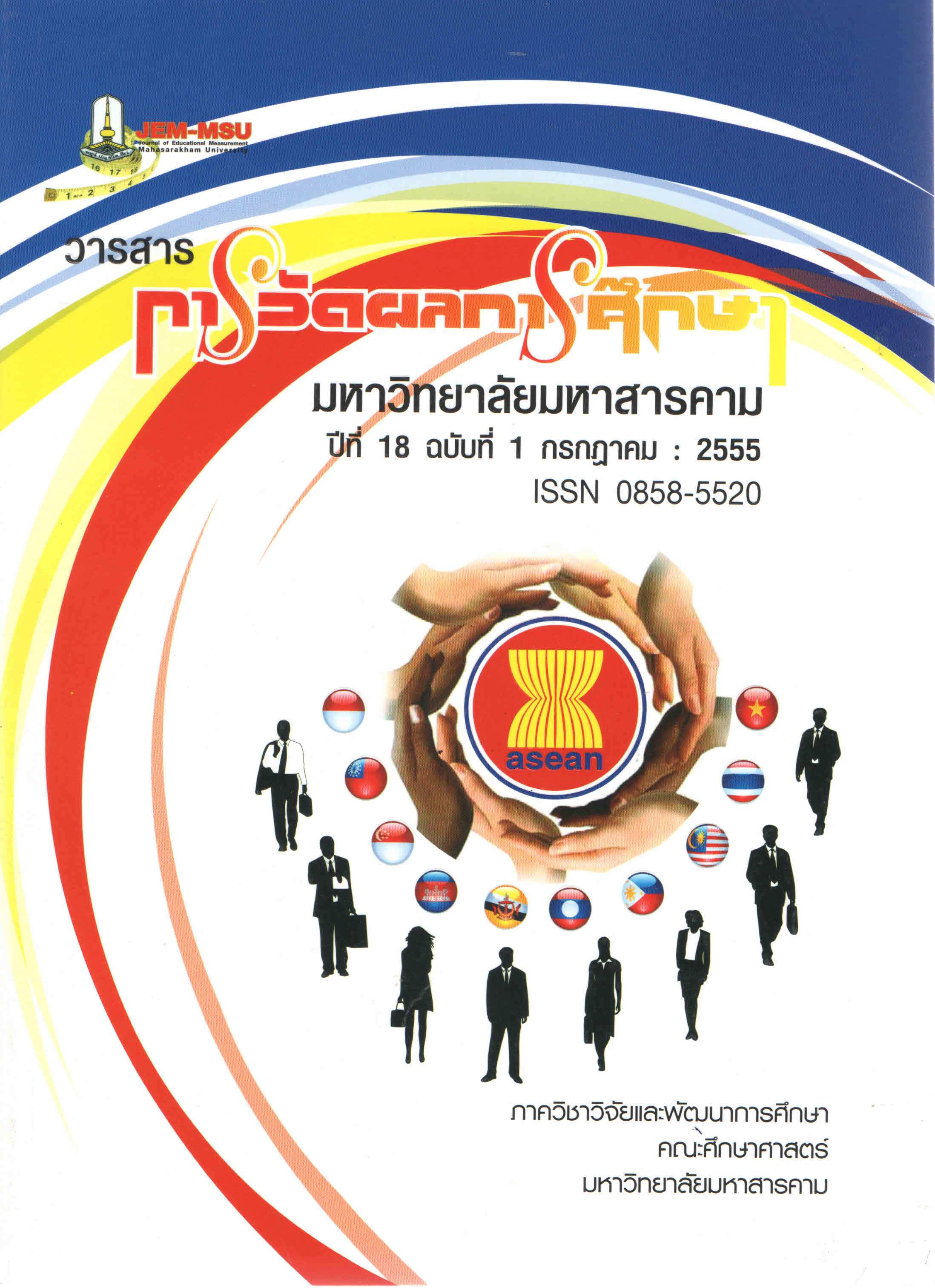THE DEVELOPMENT OF BRAIN – BASED LEARNING INSTRUCTIONAL MODEL AND READING INSTRUCTIONAL STRATEGIES TO ENHANCE ANALYTICAL READING AND COMMUNICATIVE WRITING OF THAI LANGUAGE FOR LOWER SECONDARY STUDENTS.
Main Article Content
Abstract
The purpose of this research was to develop Brain - Based Learning Instructional
Model and Reading Instructional Strategies to Enhance Analytical Reading and
Communicative Writing of Thai Language for Primary Secondary Students. The research
procedure comprised 2 steps. There were 1) to develop and verify quality of the
instructional model 2) to implement the instructional model. The samples used for
the experiment was one classroom in Chumsangsongkram Udonkanarukupathum School
of Secondary Educational Service Area office 39 in the second semester of the 2011
academic year, drawn by means of cluster random sampling. The research instruments
were a multiple – choice test of analytical reading ability was situation test checking
content validity by 5 experts. The Index of Congruence was 0.60 up, and the sample
group used for the experiment were 76 students in Mattayomsuksa 2 checking for
qualities in terms of discrimination and reliability, discriminating ranging .24 - .69 and
reliabilities ranging .92, and an assay – writing test of communicative writing ability
checking content validity by 5 experts its had Index of Congruence 1.00, and the sample
group used for the experiment were 76 students in Mattayomsuksa 2 for checking
qualities in terms of reliabilities, reliabilities ranging .90. The statistic data analyses are
percentage, mean, S.D. and t – test. The results were as follows : The developed model are
called PATCE Model consisted of Preparation : P , Analysis : A, Transfer : T, Conclusion and
Create : C and Evaluation : E had high levels of appropriateness. The effectiveness index
(E.I.) were between 61.78 – 65.80 percent showing that the students’ abilities passed
above 50 percent minimum criteria. The students’ analytical reading and communicative
writing’ abilities of Thai language after learning through the developed model were
higher than before learning through it and higher above 80 percent criteria at the .05
level of statistical significance.
Article Details
The content and information contained in the published article in the Journal of Educational Measurement Mahasarakham University represent the opinions and responsibilities of the authors directly. The editorial board of the journal is not necessarily in agreement with or responsible for any of the content.
The articles, data, content, images, etc. that have been published in the Journal of Educational Measurement Mahasarakham University are copyrighted by the journal. If any individual or organization wishes to reproduce or perform any actions involving the entirety or any part of the content, they must obtain written permission from the Journal of Educational Measurement Mahasarakham University.

